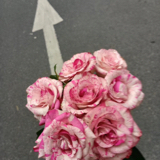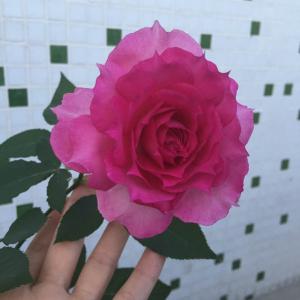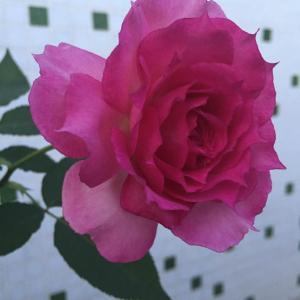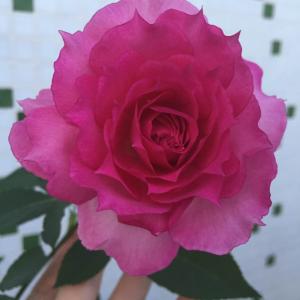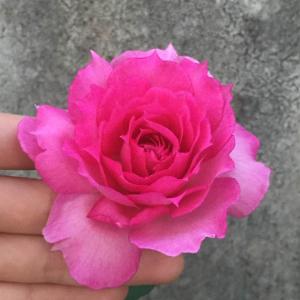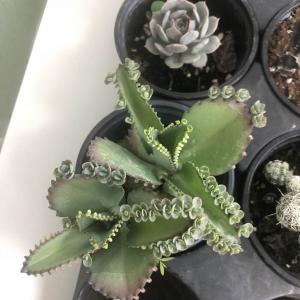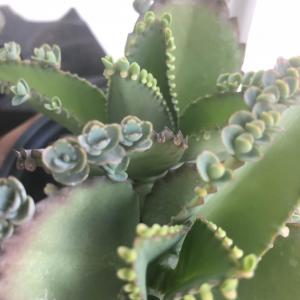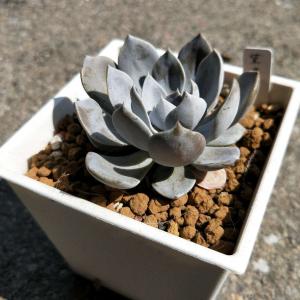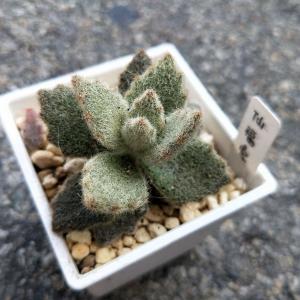文章
Miss Chen
2018年05月05日

Description: This perennial plant is about ¾-2' tall and unbranched or little branched. Scattered white hairs occur occasionally along the central stem, although it becomes glabrous with age. The opposite leaves are up to 5" long and 3" across (excluding the petioles); they are ovate-cordate, dentate along their margins, and largely hairless. The upper leaf surface is medium to dark green and hairless. The slender petioles of the leaves are up to 1½" long and medium green. The central stem terminates in a raceme of flowers up to 6" long. The stalk of this raceme has scattered white hairs. The small flowers are sparsely, but evenly, distributed along this stalk on slender pedicels up to ½" long. These pedicels spread outward.
Each flower consists of 2 white petals, 2 green sepals, 2 stamens, and a slender style. Each petal is deeply divided into 2 lobes. At the base of each flower, there is a 2-celled ovary that is green and covered with stiff hooked hairs; it is obovoid in shape. Each cell of this ovary contains a single seed. The blooming period for a colony of plants occurs during the summer and lasts about a month. Each flower is short-lived and replaced by a small bur-like fruit (see the description of the ovary above). The root system can produce rhizomes or stolons that extend through the soil or leaf mould to create clonal offsets from the mother plant.
Cultivation: The preference is dappled sunlight to medium shade, more or less mesic conditions, and a rich loamy soil with abundant organic matter.

Range & Habitat: The native Enchanter's Nightshade is an occasional to locally common plant that occurs in most counties of Illinois (see Distribution Map). This plant may be less abundant than in the past because of browsing by deer. Habitats include mesic deciduous woodlands, including oak woodlands and maple/basswood woodlands, and areas that are adjacent to woodland paths. Sometimes this species occurs in wooded upland areas and along ravine slopes.
Faunal Associations: The nectar and pollen of the flowers attract small bees, including Halictid bees (Lasioglossum spp.) and little carpenter bees (Ceratina spp.); they are also visited by Syrphid flies and bee flies (Bombyliidae). The caterpillars of a moth, Mompha terminella (Enchanter's Cosmet), are blotch leaf-miners. Birds and mammals help to distribute the seeds, as the small bur-like fruits can cling to feathers and fur; these fruits can cling to the clothing of humans as well. Deer occasionally browse on the foliage of Enchanter's Nightshade.

Photographic Location: A mesic deciduous woodlands at Busey Woods in Urbana, Illinois.
Comments: This is one of the woodland wildflowers that blooms during the summer in shaded areas. The flowers of such species are usually small, white, and not very showy. Enchanter's Nightshade is a rather odd member of the Evening Primrose family, as its flowers have only 2 petals, 2 sepals, and 2 stamens. This is a distinctive characteristic of the Circaea genus in this family. The only other member of this genus that occurs in Illinois, Circaea alpina (Small Enchanter's Nightshade), is an uncommon species that is restricted to the cool moist woodlands of northern Illinois. It has leaves that are more cordate and indented at the base, and its flowers are clustered toward the apex of the flowering stalk (rather than being evenly distributed along this stalk). While Enchanter's Nightshade is ¾-2' tall and it has 2-celled ovaries, Small Enchanter's Nightshade is less than 1' tall and it has 1-celled ovaries.
Each flower consists of 2 white petals, 2 green sepals, 2 stamens, and a slender style. Each petal is deeply divided into 2 lobes. At the base of each flower, there is a 2-celled ovary that is green and covered with stiff hooked hairs; it is obovoid in shape. Each cell of this ovary contains a single seed. The blooming period for a colony of plants occurs during the summer and lasts about a month. Each flower is short-lived and replaced by a small bur-like fruit (see the description of the ovary above). The root system can produce rhizomes or stolons that extend through the soil or leaf mould to create clonal offsets from the mother plant.
Cultivation: The preference is dappled sunlight to medium shade, more or less mesic conditions, and a rich loamy soil with abundant organic matter.

Range & Habitat: The native Enchanter's Nightshade is an occasional to locally common plant that occurs in most counties of Illinois (see Distribution Map). This plant may be less abundant than in the past because of browsing by deer. Habitats include mesic deciduous woodlands, including oak woodlands and maple/basswood woodlands, and areas that are adjacent to woodland paths. Sometimes this species occurs in wooded upland areas and along ravine slopes.
Faunal Associations: The nectar and pollen of the flowers attract small bees, including Halictid bees (Lasioglossum spp.) and little carpenter bees (Ceratina spp.); they are also visited by Syrphid flies and bee flies (Bombyliidae). The caterpillars of a moth, Mompha terminella (Enchanter's Cosmet), are blotch leaf-miners. Birds and mammals help to distribute the seeds, as the small bur-like fruits can cling to feathers and fur; these fruits can cling to the clothing of humans as well. Deer occasionally browse on the foliage of Enchanter's Nightshade.

Photographic Location: A mesic deciduous woodlands at Busey Woods in Urbana, Illinois.
Comments: This is one of the woodland wildflowers that blooms during the summer in shaded areas. The flowers of such species are usually small, white, and not very showy. Enchanter's Nightshade is a rather odd member of the Evening Primrose family, as its flowers have only 2 petals, 2 sepals, and 2 stamens. This is a distinctive characteristic of the Circaea genus in this family. The only other member of this genus that occurs in Illinois, Circaea alpina (Small Enchanter's Nightshade), is an uncommon species that is restricted to the cool moist woodlands of northern Illinois. It has leaves that are more cordate and indented at the base, and its flowers are clustered toward the apex of the flowering stalk (rather than being evenly distributed along this stalk). While Enchanter's Nightshade is ¾-2' tall and it has 2-celled ovaries, Small Enchanter's Nightshade is less than 1' tall and it has 1-celled ovaries.
0
0
文章
Miss Chen
2018年05月05日

Description: This herbaceous perennial wildflower is 3-7' tall. The stems are light green and hairless, while the large compound leaves are bipinnate or tripinnate with 10 or more leaflets. Usually 3 or 5 leaflets are grouped together in the ultimate partitions of each compound leaf. Individual leaflets are up to 4" long and 3" across; they are medium green, glabrous, and lanceolate to broadly ovate in shape. The margins of these leaflets are coarsely toothed; the terminal leaflets are often shallowly to deeply cleft.
Each plant produces one or more panicles of racemes about 1-3' long. These panicles are very narrow and produce only a few secondary racemes around the central raceme. The racemes are narrowly cylindrical in shape and erect; they are densely covered with flowers, buds, and fruits (follicles) in varying stages of development (buds on top, flowers in the middle, and fruits below). Individual flowers span about 2/3" across and they are completely white, consisting of about 24 stamens, a single pistil, and insignificant sepals that drop early. The slender stamens are long and conspicuous, while the pistil has a short curved tip. Each flower has a short pedicel. The blooming period occurs during early to middle summer and lasts about 1½ months. The flowers have an odd unpleasant scent. Each flower is replaced by a small follicle about 1/3" long; this follicle hasDistribution Map a beak that is very short and usually curved. Each follicle splits open along one side to release several seeds; these seeds are fairly smooth (not conspicuously scaly). The root system is rhizomatous and fibrous.
Cultivation: The preference is partial sun to medium shade, mesic conditions, and a rich loamy soil with abundant organic material. This plant requires plenty of space.
Range & Habitat: The native Black Cohosh is rare in Illinois and state-listed as 'endangered.' It has been found in only a few counties in northern and southern Illinois. At some of these localities, Black Cohosh is probably extirpated because it hasn't observed since the late 19th century. At other localities, the population consists of plants that have been introduced. Habitat includes mesic deciduous woodlands (where Sugar Maple is often dominant) and the bases of bluffs along rivers. In Illinois, Black Cohosh is more common in flower gardens than the wild; it is also more common in natural areas further to the east, including the Appalachian mountains.
Faunal Associations: The flowers provide both nectar and pollen to insect visitors. Unfortunately, these insects are largely unknown, in part because Black Cohosh is uncommon in Illinois and neighboring states. The caterpillars of the butterfly Celastrina neglecta major (Appalachian Azure) feed exclusively on Black Cohosh; however, this insect doesn't occur in Illinois. It is doubtful that mammalian herbivores feed on this wildflower to any significant degree because the foliage is toxic.
Photographic Location: A flower garden at The Arboretum in Urbana, Illinois.
Comments: This is one of the largest woodland wildflowers. Black Cohosh is attractive as a wildflower in part because it produces showy spikes of white flowers during the summer, when there is little else in bloom in wooded habitats. For this reason, it's a pity that this species isn't more common within the state. There are two other species that Black Cohosh can be confused with. One of them, Cimicifuga rubifolia (Appalachian Bugbane), has leaflets up to 10" long and across that often display a maple-leaf shape; it also has fewer than 10 leaflets per compound leaf.

In contrast, Black Cohosh has smaller leaflets (up to 4" long and 3" across) and there are usually more than 10-20 leaflets per compound leaf. Another species, Cimicifuga americana (American Bugbane), has foliage that is nearly identical to that of Black Cohosh. However, American Bugbane has several pistils in the center of each flower, while Black Cohosh has only a single pistil per flower. Similarly, American Bugbane produces its follicles in clusters (one for each pistil), while Black Cohosh produces its follicles individually.
Each plant produces one or more panicles of racemes about 1-3' long. These panicles are very narrow and produce only a few secondary racemes around the central raceme. The racemes are narrowly cylindrical in shape and erect; they are densely covered with flowers, buds, and fruits (follicles) in varying stages of development (buds on top, flowers in the middle, and fruits below). Individual flowers span about 2/3" across and they are completely white, consisting of about 24 stamens, a single pistil, and insignificant sepals that drop early. The slender stamens are long and conspicuous, while the pistil has a short curved tip. Each flower has a short pedicel. The blooming period occurs during early to middle summer and lasts about 1½ months. The flowers have an odd unpleasant scent. Each flower is replaced by a small follicle about 1/3" long; this follicle hasDistribution Map a beak that is very short and usually curved. Each follicle splits open along one side to release several seeds; these seeds are fairly smooth (not conspicuously scaly). The root system is rhizomatous and fibrous.
Cultivation: The preference is partial sun to medium shade, mesic conditions, and a rich loamy soil with abundant organic material. This plant requires plenty of space.
Range & Habitat: The native Black Cohosh is rare in Illinois and state-listed as 'endangered.' It has been found in only a few counties in northern and southern Illinois. At some of these localities, Black Cohosh is probably extirpated because it hasn't observed since the late 19th century. At other localities, the population consists of plants that have been introduced. Habitat includes mesic deciduous woodlands (where Sugar Maple is often dominant) and the bases of bluffs along rivers. In Illinois, Black Cohosh is more common in flower gardens than the wild; it is also more common in natural areas further to the east, including the Appalachian mountains.
Faunal Associations: The flowers provide both nectar and pollen to insect visitors. Unfortunately, these insects are largely unknown, in part because Black Cohosh is uncommon in Illinois and neighboring states. The caterpillars of the butterfly Celastrina neglecta major (Appalachian Azure) feed exclusively on Black Cohosh; however, this insect doesn't occur in Illinois. It is doubtful that mammalian herbivores feed on this wildflower to any significant degree because the foliage is toxic.
Photographic Location: A flower garden at The Arboretum in Urbana, Illinois.
Comments: This is one of the largest woodland wildflowers. Black Cohosh is attractive as a wildflower in part because it produces showy spikes of white flowers during the summer, when there is little else in bloom in wooded habitats. For this reason, it's a pity that this species isn't more common within the state. There are two other species that Black Cohosh can be confused with. One of them, Cimicifuga rubifolia (Appalachian Bugbane), has leaflets up to 10" long and across that often display a maple-leaf shape; it also has fewer than 10 leaflets per compound leaf.

In contrast, Black Cohosh has smaller leaflets (up to 4" long and 3" across) and there are usually more than 10-20 leaflets per compound leaf. Another species, Cimicifuga americana (American Bugbane), has foliage that is nearly identical to that of Black Cohosh. However, American Bugbane has several pistils in the center of each flower, while Black Cohosh has only a single pistil per flower. Similarly, American Bugbane produces its follicles in clusters (one for each pistil), while Black Cohosh produces its follicles individually.
0
0
文章
Miss Chen
2018年05月05日

Description: This wildflower has evergreen leaves and semi-woody stems. The entire plant, including the inflorescence, is about 6-10" tall. Plants without an inflorescence are only 3-5" tall. The central stem of each plant is red to brown, unbranched, glabrous, and more or less terete. One or two pairs of smaller opposite leaves occur near the base of the stem, while a single whorl of three larger leaves occur at the base of the inflorescence. The leaves are 1-3" long, ¼–1" across, rather leathery in texture, and glabrous; they are lanceolate to ovate in shape, while their margins have widely spaced dentate teeth. The upper leave surface is dark green, except in areas along the veins, where it is white; this provides the upper leaf surface with a pinnately striped appearance. The lower leaf surface is light green. The petioles of these leaves are short and slender. On fertile plants, the stem terminates in an inflorescence consisting of a nodding umbel, or nodding umbel-like cyme, of 2-5 flowers on a long unbranched peduncle (flowering stalk). Sometimes the inflorescence produces only a single nodding flower. The erect peduncle is pinkish red to light brown, relatively stout, terete, and short-pubescent; the pedicels of individual flowers are similar, except they are shorter (about 1" long) and strongly recurved, holding the flowers face-down. Each flower is about ½–¾" across, consisting of 5 white petals, 5 light green sepals, 10 stamens, and a green pistil. The petals are oval in shape and concave toward the face of the flower. The sepals are oval-ovate in shape and less than one-half of the length of the petals. The stamens have showy light pink anthers and very short filaments; the anthers are bifurcated, releasing pollen from round pores at their tips. The pistil consists of a superior ovary, a short style, and large stigma (all green). The ovary is subgloboid in shape and slightly 5-lobed. The style has a short obconic shape with a broad flat tip and even broader base. The stigma is dome-shaped and wider than the style.
The blooming period occurs from late spring to early summer, lasting about 2 weeks. The flowers are fragrant. Afterwards, the flowers are replaced by seed capsules that are about 8 mm. (1/3") across and dark brown at maturity; they have the same shape as the ovary. The sepals persist underneath these seed capsules. When these capsules split open from above, they release many fine seeds. The root system consists of brown fibrous roots and underground white stolons; the latter are long and slender. Clonal plants are often produced from the stolons.
Cultivation: The preference is partial sun to medium shade, dry-mesic conditions, and an acidic soil containing some rocky material or sand. Growth and development are relatively slow. The seeds are difficult to germinate, although new plants can be created by dividing the root systems of older plants. In order to flourish, however, the presence of an appropriate mycorrhizal fungus in the soil may be required.
Range & Habitat: Striped Wintergreen is a rare native plant in Illinois, where it is state-listed as 'endangered.' It has been found in only two counties (Cook County and Pope County) within the state; see the Distribution Map. At the present time, it may be extirpated from Cook County because of development. Illinois lies along the NE range-limit of this plant; it is more common in mountainous areas further to the east and southeast. In Illinois, habitats consist of rocky upland woodlands and sandy upland woodlands; the latter habitat occurs along Lake Michigan. In these habitats, oaks (Quercus spp.) are usually the dominant canopy trees. Outside of Illinois, this plant is often found in mixed woodlands and coniferous woodlands. Striped Wintergreen is restricted to high quality natural areas in Illinois.

Faunal Associations: The flowers are cross-pollinated primarily by bumblebees; honeybees also visit the flowers (Standley et al., 1988). These insects obtain nectar from the flowers. The foliage of Striped Wintergreen is regarded as toxic to sheep (Schaffer, 1904), and White-tailed Deer usually avoid it when there are better sources of food (Rawinski, 2016).
Photographic Location: A wooded area in the southern Appalachian mountains. The photographs were taken by Paul Showers (Copyright © 2016).
Comments: Both the foliage and flowers are quite ornamental. In Illinois, the closest relative of Striped Wintergreen is Pipsissewa (Chimaphila umbellata). This latter plant can be distinguished by its leaves: 1) they are oblanceolate in shape, 2) the margins of its leaves are more finely and abundantly toothed, and 3) its leaves lack the white markings that are found on the leaves of Striped Wintergreen. The inflorescence of Pipsissewa also tends to have more flowers (4-8) than the inflorescence of Striped Wintergreen. The common name, 'Wintergreen,' refers to the evergreen leaves, as the leaves of Striped Wintergreen do not possess a mint-like fragrance. Thus, Striped Wintergreen should not be confused with another low-growing semi-woody plant, Wintergreen (Gaultheria procumbens). In addition to the fragrance of its leaves, this latter plant differs by its white bell-shaped flowers, red berries, and toothless leaf margins. Other common names of Chimaphila maculata are Spotted Wintergreen, Spotted Prince's Cone, Striped Prince's Cone, Spotted Pipsissewa, and Striped Pipsissewa.
The blooming period occurs from late spring to early summer, lasting about 2 weeks. The flowers are fragrant. Afterwards, the flowers are replaced by seed capsules that are about 8 mm. (1/3") across and dark brown at maturity; they have the same shape as the ovary. The sepals persist underneath these seed capsules. When these capsules split open from above, they release many fine seeds. The root system consists of brown fibrous roots and underground white stolons; the latter are long and slender. Clonal plants are often produced from the stolons.
Cultivation: The preference is partial sun to medium shade, dry-mesic conditions, and an acidic soil containing some rocky material or sand. Growth and development are relatively slow. The seeds are difficult to germinate, although new plants can be created by dividing the root systems of older plants. In order to flourish, however, the presence of an appropriate mycorrhizal fungus in the soil may be required.
Range & Habitat: Striped Wintergreen is a rare native plant in Illinois, where it is state-listed as 'endangered.' It has been found in only two counties (Cook County and Pope County) within the state; see the Distribution Map. At the present time, it may be extirpated from Cook County because of development. Illinois lies along the NE range-limit of this plant; it is more common in mountainous areas further to the east and southeast. In Illinois, habitats consist of rocky upland woodlands and sandy upland woodlands; the latter habitat occurs along Lake Michigan. In these habitats, oaks (Quercus spp.) are usually the dominant canopy trees. Outside of Illinois, this plant is often found in mixed woodlands and coniferous woodlands. Striped Wintergreen is restricted to high quality natural areas in Illinois.

Faunal Associations: The flowers are cross-pollinated primarily by bumblebees; honeybees also visit the flowers (Standley et al., 1988). These insects obtain nectar from the flowers. The foliage of Striped Wintergreen is regarded as toxic to sheep (Schaffer, 1904), and White-tailed Deer usually avoid it when there are better sources of food (Rawinski, 2016).
Photographic Location: A wooded area in the southern Appalachian mountains. The photographs were taken by Paul Showers (Copyright © 2016).
Comments: Both the foliage and flowers are quite ornamental. In Illinois, the closest relative of Striped Wintergreen is Pipsissewa (Chimaphila umbellata). This latter plant can be distinguished by its leaves: 1) they are oblanceolate in shape, 2) the margins of its leaves are more finely and abundantly toothed, and 3) its leaves lack the white markings that are found on the leaves of Striped Wintergreen. The inflorescence of Pipsissewa also tends to have more flowers (4-8) than the inflorescence of Striped Wintergreen. The common name, 'Wintergreen,' refers to the evergreen leaves, as the leaves of Striped Wintergreen do not possess a mint-like fragrance. Thus, Striped Wintergreen should not be confused with another low-growing semi-woody plant, Wintergreen (Gaultheria procumbens). In addition to the fragrance of its leaves, this latter plant differs by its white bell-shaped flowers, red berries, and toothless leaf margins. Other common names of Chimaphila maculata are Spotted Wintergreen, Spotted Prince's Cone, Striped Prince's Cone, Spotted Pipsissewa, and Striped Pipsissewa.
1
0





